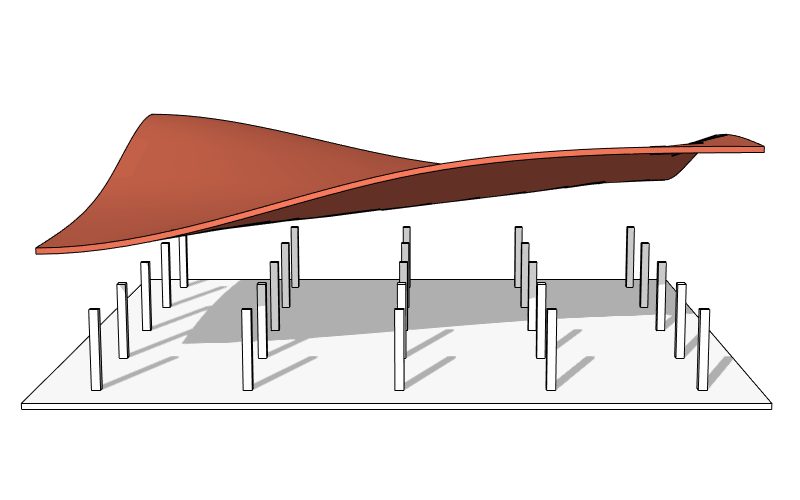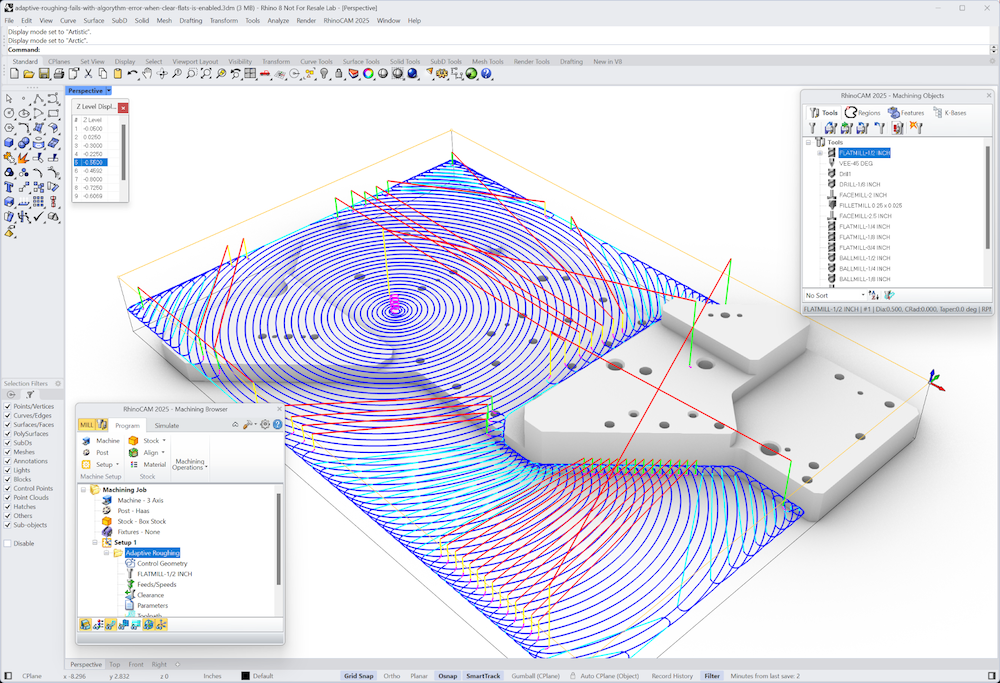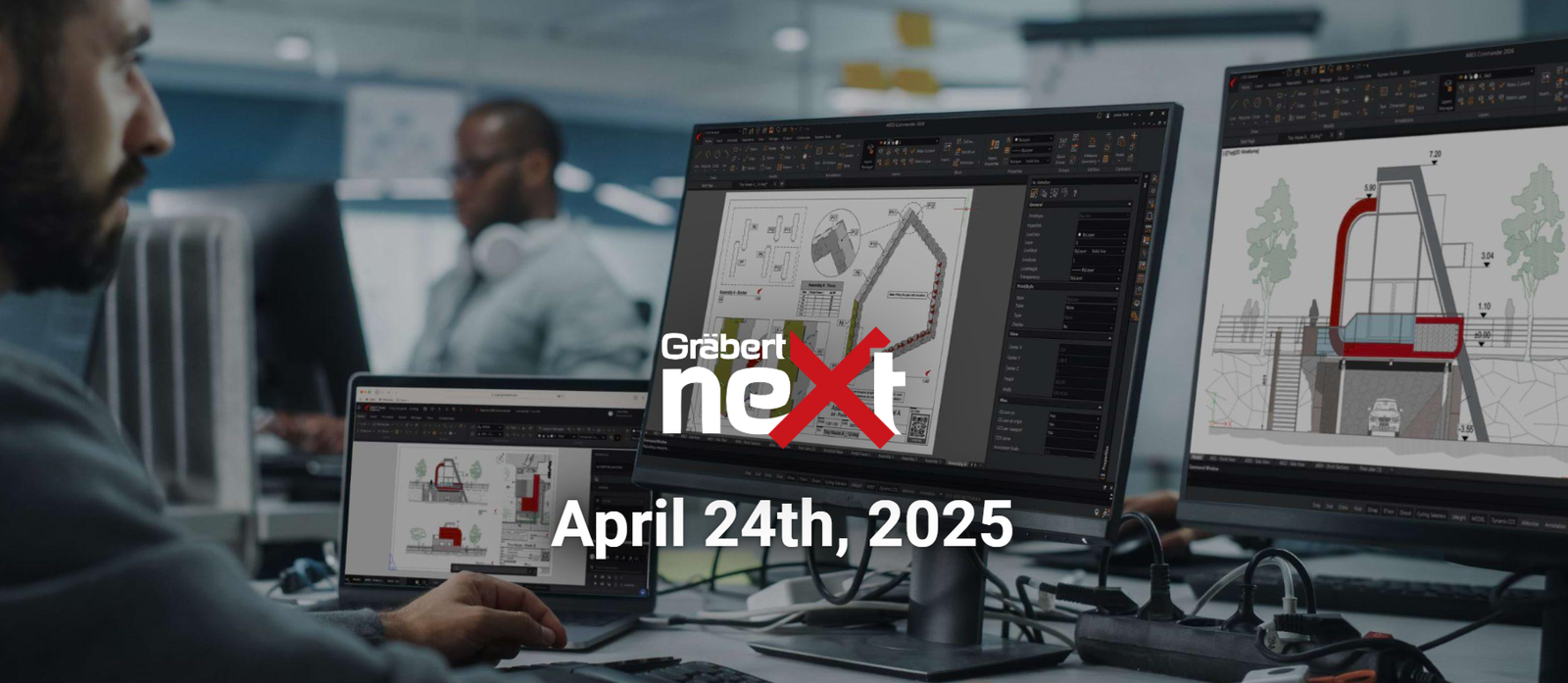Your Cart is Empty
Customer Testimonials
-
"Great customer service. The folks at Novedge were super helpful in navigating a somewhat complicated order including software upgrades and serial numbers in various stages of inactivity. They were friendly and helpful throughout the process.."
Ruben Ruckmark
"Quick & very helpful. We have been using Novedge for years and are very happy with their quick service when we need to make a purchase and excellent support resolving any issues."
Will Woodson
"Scott is the best. He reminds me about subscriptions dates, guides me in the correct direction for updates. He always responds promptly to me. He is literally the reason I continue to work with Novedge and will do so in the future."
Edward Mchugh
"Calvin Lok is “the man”. After my purchase of Sketchup 2021, he called me and provided step-by-step instructions to ease me through difficulties I was having with the setup of my new software."
Mike Borzage
The Edge: LAND COLLECTIVE, Landscape Architecture to the People.
March 17, 2015 8 min read
Novedge: Tell us a bit about who you are and what you do. Canal Park . Image credits ©2013 LAND COLLECTIVE + Sahar Coston-Hardy
Canal Park . Image credits ©2013 LAND COLLECTIVE + Sahar Coston-Hardy
David Rubin: Happy to do so. My name is David Rubin and I am the founding principal of LAND COLLECTIVE, a landscape architecture and urban design studio in Philadelphia. In 2011, I was honored to receive the Rome Prizein Landscape Architecture from the American Academy in Rome – the highest honor in our field. I formed the studio during my studies at the Academy, where I studied the marriage of creative think tank campus design, productive landscapes, and their capacity to engage people in dialogue to foster change. I founded LAND COLLECTIVE after twenty-one years in practice with a commitment to crafting landscapes which affect positive social change through empathy-driven design. Our mission has been very well received, and in the brief history of the studio, we have been honored with some significant commissions, including a collaboration with the New York Stock Exchange in New York City, a 10.5-acre public park in Westfield, Indiana, the creation of a park and plaza for Cummins’ new Indianapolis Distribution Unit Headquarters, and the University of Pennsylvania’s new South Bank Innovation Campus – Pennovation Works – in Philadelphia, Pennsylvania.  You can check out David Rubin's talk " Food for Thought: Sustenance & Sustainability" for the American Academy in Rome here.
You can check out David Rubin's talk " Food for Thought: Sustenance & Sustainability" for the American Academy in Rome here.
Novedge: What is the difference between Land Collective and your typical Design Firm?
David Rubin: LAND COLLECTIVE is a Landscape Architecture and Urban Design studio committed to practicing with an emphasis on socially-purposeful design strategies. The firm is dedicated to crafting landscapes that create positive change through cross-disciplinary collaborations and the synthesis of art, technology and the social sciences to create human-centered works. It is an appreciation for empathy that drives the studio’s design process. We believe that design truly can save the world. We base all of our design decisions in the desire to create a place in which very different people might come together—a chemistry professor, say, and a young protester. If, as a result of the quality and character of a LAND COLLECTIVE design they choose to sit next to one another, and in the act of sitting, they enter into a conversation, and as a result of that conversation, they come up with an idea, and that idea, ten years down the road, saves the world—then LAND COLLECTIVE will have been successful in its efforts, because we created the place in which that idea was formed. That is our mission.
Novedge: What is a recent project that you worked on?
David Rubin: LAND COLLECTIVE recently completed the design of the CommonGround at Eskenazi Health Hospital, continuing the effort begun by David Rubin while Partner at Olin in the creation of a new campus for Indianapolis’ oldest public hospital. The CommonGround is a large programmed plaza with two fountains designed in collaboration with Fluidity, and a trellis structure by Diller Scofidio Renfro.  Image credits ©2014 Fluidity Design
Image credits ©2014 Fluidity Design Image by ©2014 LAND COLLECTIVE
Image by ©2014 LAND COLLECTIVE
The Commonground is just over an acre large and located adjacent to a historic Olmsted Brothers’ landscape which is part of Indiana University-Purdue University Indianapolis. As part of the design guidelines which Rubin developed for the entirety of the Hospital Campus, a new Wellness Trail helps connect the new hospital to its community and the City’s cultural amenities and developing Cultural Trail. The new campus, including the plaza and facility expansion by HOK, is now on track to become the first LEED® Silver certified hospital campus in the country. https://player.vimeo.com/video/120958182
Eskenazi's "CommonGround" Long Version-HD from David Rubin | LAND COLLECTIVE on Vimeo.
We also worked on The Pennovation Center, The University of Pennsylvania’s new home for entrepreneurs, researchers and innovators on the Schuylkill River’s Southbank site in Philadelphia. The Center will be the first major development within the University’s 23-acre site known as Pennovation Works. LAND COLLECTIVE has been working collaboratively with design architects HWKN and architect-of-record, KSS, as well as signage & wayfinding designers Bruce Mau Design. Image by ©2014 LAND COLLECTIVE + HWKN
Image by ©2014 LAND COLLECTIVE + HWKN
LAND COLLECTIVE energized the original master plan by focusing attention on a central plaza, emphasizing the energy of collaboration inherent on the site and expressing it as radiating out through the revitalized Pennovation Center’s dramatic north-facing façade. The building becomes a visible icon in the landscape which is a signifier of the new campus, and visible from across the river. A central plaza with inventive custom seating and bold paving patterns encourages outdoor gathering, fostering idea generation through serendipitous encounters, opportunities for chance meetings and scheduled events, large and small. An expansive wildflower meadow acts as a short-term land-bank planting strategy that instantly enhances the ecology of the site and is part of a site-wide stormwater management strategy.  Image by ©2014 LAND COLLECTIVE + HWKN
Image by ©2014 LAND COLLECTIVE + HWKN
Please visit the new Pennovation Works website, designed by Bruce Mau Design, for additional information on the project.
LAND COLLECTIVE has also been commissioned by the City of Westfield, Indiana to design a 10.5-acre park – The Junction. Primed to become the landmark park of the Midwest, the civic space is the central focus of the City’s development plan. The design of the park incorporates pavilions, a landform amphitheater and performance venue, fountains, winter skating, the connection to actively-used historic trails, among other programming elements. The Junction will become a central gathering place for festivals, markets, and other events in the City. Our studio is working to remediate a stream central to the site which ties to a regional stormwater mitigation system. In collaboration with the City, LAND COLLECTIVE is acting as prime in the design of this signature park and has assembled a stellar team of extraordinary collaborators, including: HWKN, Tillett Lighting Design, Bruce Mau Design, Stantec, ETM Associates, and FlatLand Resources. Image by ©2014 LAND COLLECTIVE
Image by ©2014 LAND COLLECTIVE
Novedge: There is Sustainable Design and there is Social Sustainability. How do you strive for both?
David Rubin: Social Sustainability is the first step in creating ecological sustainability: for places to survive ecologically, the public must be involved, value and cherish the ecological properties of the landscape they inhabit. Truthfully, it should not be difficult for any firm to design to the equivalent of LEED Silver, but designing a space that reinforces the prospect of connection between people is a greater challenge. LAND COLLECTIVE always fosters social sustainability as the first sieve in the design process.  Photo credits ©2013 LAND COLLECTIVE
Photo credits ©2013 LAND COLLECTIVE
We create programmable spaces that serve the common good throughout the year. Wherever we can, LAND COLLECTIVE designs spaces where people can engage in dialogue, in small groups or in great numbers. It is our goal that anyone can find a place for themselves in a space of our design. A prime example of this is Canal Park in Washington, D.C. Designed while an equity partner at my former firm, Canal Park was intended as an economic stimulus for an as-yet unrealized neighborhood. The 3-acre park was designed for the diverse population that was anticipated, from worker housing to market-rate properties. When we were designing, we had no true idea of who would occupy the park, so we designed a flexible and adaptable space that has a timeless modernity and, we hope, is always relevant. In the process of designing a public space that could inform everyone, we also created a space that has since been acknowledged as a three-star rated SITES certified park and is LEED Gold. Among its most sustainable features, it captures stormwater from the adjacent neighborhood, cleanses it, and re-uses it in irrigation, fountain water, and toilet flushing, preventing 1.5 million gallons of stormwater from entering D.C.’s combined stormwater/sewer system. Since its opening, Canal Park has been acknowledged by the Washington, D.C. Business Journal: “This striking outdoor space… constitutes the very essence of what a park in the 21st century should be: environmentally responsible, multipurpose and contemporary.”
Novedge: How did you discover Novedge?
David Rubin: Our IT Consultant recommended Novedge from the first days of the studio’s formation, and we have turned to Novedge repeatedly to find competitively-priced software that makes it possible for us to practice across disciplines. Since our first purchase in 2012, we have returned to Novedge to find just what we need at the best possible price.
Novedge: What software do you use?
David Rubin: Presently, the studio is utilizing AutoCAD MAP and AutoCAD 2015, but we also work in Rhino with plug-ins Terrain, VRay, Grasshopper, and Blender. We also subscribe to the Adobe Cloud and use Deltek Ajera for project management and accounting.
Novedge: I love that you have an inspiration page on you website. What and who inspires you these days?
David Rubin: I am inspired by Marcus Aurelius’ “Meditations,” – the recent Hicks Brothers translation, in particular. I keep a copy by my bedside. As the leader of a young studio, I find his musing to be powerful, even thousands of years later. I also appreciate Stephen Hawking’s ability to describe the extents of our universe (and to do so with such clarity while trapped in his failing body). I recently gave a keynote lecture in which I likened the General Theory of Relativity and Quantum Physics to human beings in the connective tissue that is landscape. I’m pleased to say, the audience received my thoughts graciously. Visually, I am inspired by Jasper Johns and Frank Stella whose artistry is so compelling. Their collective works comprise an extraordinary narrative in the growth of modern art. These men can paint!
And I am inspired by my studio colleagues who represent a wealth of talent and are a joy to collaborate with. They teach me every day.
Novedge: In Urban Design there should be more of…….. and less of………? Fill the blanks.
David Rubin: In urban design there should be more well-designed public spaces – spaces that foster the engagement of everyone, no matter their socio-economic position. Modifying or improving landscape is the least expensive way to inform the greatest number of people in our society.
Cities should never have one-way streets of widths greater than three lanes. So many cities still embrace the car over the pedestrian and the cyclist, and give drivers multi-lane one-way access through urban environments. In doing so, the downtown becomes a pass-through to the nearest highway, not a place of engagement, a place to stay, a livable city.
Novedge: What country or city is at the avant guarde of Urban and Landscape Architecture?
David Rubin: New York City is doing great things with the quality and character of their urban realm. They can clearly afford to do so – both in the wealth of the City and in the wealth of design talent that resides there. Long before there was the Highline, there was the rehabilitation of Bryant Park which started positive transformations in the City’s core. It helped create an awareness that well-designed public spaces are economic generators. New York City continues to transform itself in inventive parks, plazas and infrastructure re-use. Our work there to improve the face of the New York Stock Exchange is a wonderful exploration in defining what is quintessential New York – celebrating history while allowing for near-constant change and activity. In some ways, that landscape will also work to redefine people’s relationship with the Exchange and global finance in the abstract.
But even more interestingly, what we consider “second tier” cities in the United States – cities like Indianapolis and Minneapolis – are transforming their urban core through the implementation of well-designed connective tissue. They are making their cities places to stay and inhabit well, rather than reinforcing their character as a pass-through.
David Rubin's LAND COLLECTIVE gave us a clear example of the power of Design; to keep track of their inspired projects follow them on Facebook and Instagram.
We feel honored to be able to provide LAND COLLECTIVE with competitively-priced software that makes it possible for them to practice across disciplines. If you feel like checking us out visit the Novedge Website.
Related articles
Also in NOVEDGE Blog

Enhance Your Designs with VisualARQ 3: Effortless Geometry Extensions for Walls and Columns
April 30, 2025 8 min read
Read More
MecSoft Unveils RhinoCAM 2025 and VisualCAD/CAM 2025 with Enhanced Features
March 08, 2025 5 min read
Read MoreSubscribe
Sign up to get the latest on sales, new releases and more …






